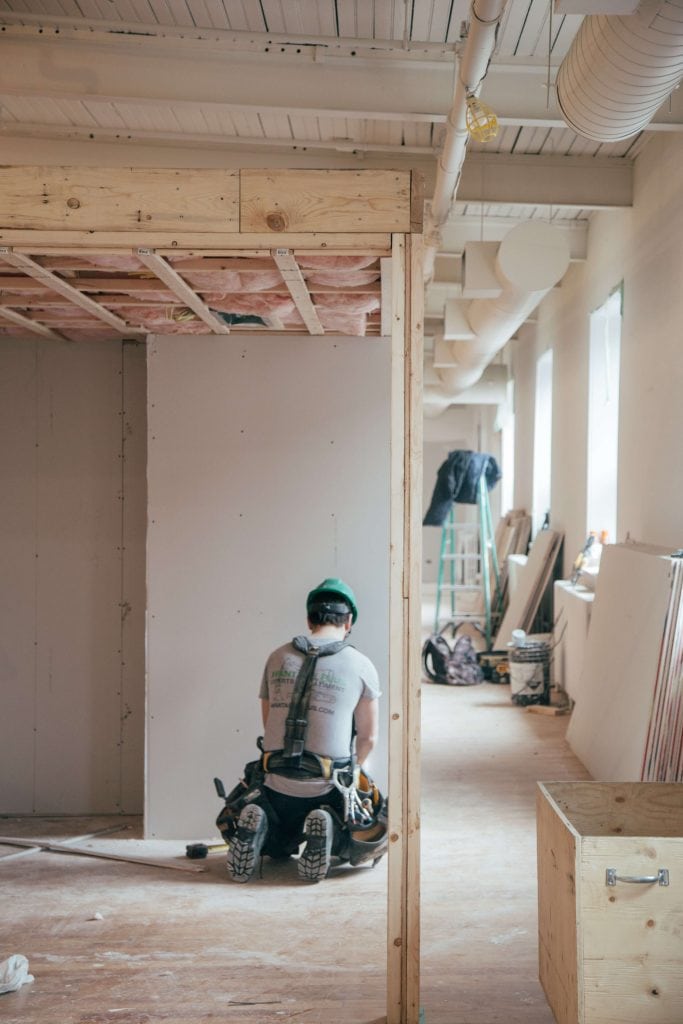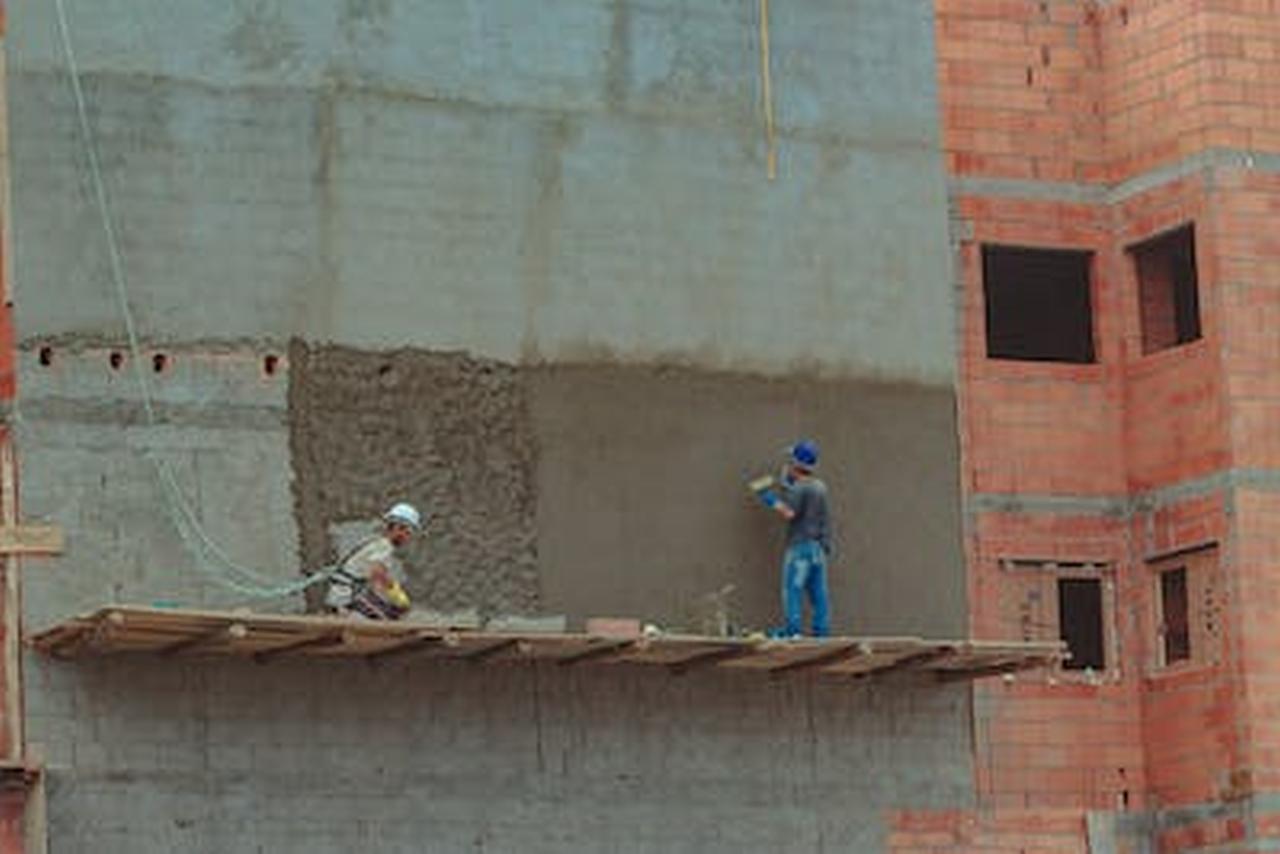Maintenance is the combination of technical and administrative actions intended to keep or restore an item's function. Many companies seek cost, quality, service, and on-time delivery advantages. Maintenance's effect on these variables has increased attention to the area as part of productivity improvement. Maintenance is becoming a major contributor to manufacturing system performance and profitability. Some consider manufacturing maintenance the "last frontier.
If you have handyman skills such as fixing a dripping faucet, nailing down sagging shingles, painting a wall, unsticking a stuck door, fixing a broken cabinet, and constructing an inclosure for a garbage can, this business could be just up your alley. Your neighbours will call on you when they have a project that requires more skill or experience than they have, but is still too small to justify hiring an expensive contractor. This is a thriving enterprise. You may get started on a tight budget and still achieve success by working from home. When you can help people save money and provide services they cannot, they are grateful. You'll require expertise in fixing plumbing, wiring, painting, and building things. You'll need people skills to work with various characters on their own turf, as well as a keen eye for logistics to organise your time effectively.
Distinct Forms of Maintenance

Preventative Maintenance
Routine inspections of equipment and other parts of a building are a key part of preventative maintenance (PM), which aims to fix niggling problems before they escalate.
The fundamental goal of preventative maintenance (PM) is to ensure that the machine, gadget, or equipment operates reliably between scheduled services. In particular, malfunctions that could have resulted from inattention, exhaustion, or simple ageing.
Scheduled Maintenance
The term "SM" is shorthand for "scheduled maintenance," which is a set of tasks that need to be carried out on a regular basis by an expert to guarantee that an item keeps running well. Equipment that is regularly serviced has a lower chance of experiencing unanticipated failure. SM calls for forethought.
Service recommendations will be provided by the salesman when you purchase a new car. This serves as an illustration of SM in action. You should expect a faster rate of depreciation for your car if you don't take it in for regular maintenance as advised.
Predictive Replacement
By definition, "PR" describes the action of updating something that still serves its purpose but has seen better days. For the most part, tax consequences are positive.
"It's a common practise to remove and donate expensive equipment or bulk quantities of individually cheap supply items on a predetermined or expected shelf life schedule, with the tax benefits of doing so. Items like these are donated to tax-exempt organisations.
Condition-Base Maintenance
Condition-Base Maintenance, or CBM, is the method of just fixing things when they break. When one or more warning signs indicate that a gadget is about to fail, the bulk of the time, customers choose for CBM.
If a manufacturing management notices a decline in performance, for example, they may look into CBM as a possible solution.
According to Wikipedia, CBM "in an effort to maintain proper machinery functioning at all times, this system was put into place. CBM relies on in-the-moment information to set priorities and maximise the effectiveness of existing maintenance assets."
The Current State of the Market
Though single-family home owners will make up the bulk of your clientele, you can also consider targeting small apartment and condo complexes without a full-time maintenance staff, as well as local businesses and real estate agents who may need help maintaining vacant properties. Flyers advertising your business can be placed under doorsteps or repurposed as door hangers to attract new consumers. Put up ads in the paper and the Yellow Pages to reach people in your area.
Deliver flyers or brochures to local companies and explain your offerings to local entrepreneurs. Don't lose hope if you don't get any takers the first time you arrive; you just have to keep trying to sell your wares. Two more visits are usually all that's needed to seal the deal on a deal.
What You'll Need To Get Started
Before beginning any construction work, you should check with your state's contractor licencing board or department of commerce to see if a licence is necessary. You'll feel a need to associate with others. Furthermore, you will need the standard handyman tools such as hammers, screwdrivers, pliers, wrenches, grip vices, flashlights, a cordless saw, a stepladder, paintbrushes, and rollers. It's also a good idea to have a pager and a pickup vehicle so that you may make house calls and stay in touch with clients throughout the day.
Do you need a full range of property upkeep services? Do not bother any further! Count on Hitch Property Constructions to get the job done.
Upkeep as an Economic Activity
Maintenance is seen as a distinct entity in the manufacturing sector. Maintenance costs are consistently placed among a manufacturer's top three largest outlays.
Each of the underlying systems is necessary for the maintenance company to function properly.
Managers of the maintenance division must make choices that will boost the division's productivity and earnings.
A negative return on investment (NPI) can be reached when using condition-based predictive maintenance (PdM), as seen in the graph on the bottom right. Constantly assessing the costs against the advantages of PdM is essential. PdM's cost-effectiveness can shift from one procedure to another. To give only one illustration:
- How much money does every minute of process interruption cost?
- In other words, can a previous state of the process be restored? Have you checked to see if it's cycle time?
- Will there be any dangers if the process fails?
- What kinds of malfunctions would the instrument be able to foretell?
- Do these patterns of failure repeat themselves in the past?
- How much time and money does it take to gather forecasting information?
The straightforward calculation of the cost-benefit ratio presented here is a useful tool for making quick judgments. But if we want to be successful as a maintenance company, we need to go farther and ask questions like:
- Help! We need to use PdM tools efficiently yet not break the bank.
- Is there a way to include a prediction tool into the operational logic of a machine?
Maintenance should not suspend our efforts to answer these issues because we lack the resources to buy predictive tools. Predictive tools have the potential to improve productivity and reduce maintenance costs, so we should be motivated to figure out how to acquire the data we need and create tools that are both cost-effective and affordable. To use condition-based predictive prognostic technologies is the future of the maintenance sector, and nobody disputes it.
Leaders in the maintenance industry will never give up trying to do away with emergency repairs. The expenses of reactive upkeep extend beyond the price of downtime alone:
- Spares: Only a just-in-time supply of spares is feasible with a highly predictive software system.
- Takeaway: Fixing breakdowns is a pain in the neck.
- In terms of worker protection, emergency repairs cause more injuries (per hour) than routine upkeep does.
To remain at the forefront of the maintenance industry, we must continually innovate towards more efficient methods of upkeep.
Commercial Maintenance Management
The promptness of maintenance can be gauged by looking at the average response time for various tasks. Due to the essential nature of maintenance, many businesses aim to improve their responsiveness. For urgent tasks, you can set a deadline of a week. These targets are again determined by the customers. Response time is often determined by the machinery rather than the nature of the activity being performed. While both are necessary for a successful surgery, the air filtration system in the operating room is more crucial than the bed. Our response time objectives are task and resource specific. The time it takes to begin working on a request is factored into the average response time. As reflected by this metric, the extent to which maintenance is performed in a timely manner is communicated to customers.
Customer on-timeness is tracked by schedule compliance. Time-to-start is a measurement of how close the work order's scheduled start date is to the actual start date. Either it began at the scheduled time or it did not; it's as easy as comparing the two. Having open lines of contact with your customers and effectively managing their expectations is essential.
We evaluate quality through customer feedback, peer reviews, and repeat business. If at all feasible, it's important to acknowledge clients who are dissatisfied. A work slip is often used and requires the customer's signature to indicate their approval of the job being done. Has the extent of this sort of acceptance been evaluated? It's possible that having a supervisory work review mechanism in place would be the most effective method of ensuring quality. Results from formal programmes on customer satisfaction and personnel competence are quite useful. Job performance and client happiness are both acknowledged by a star system. In conclusion, a labour activity that is frequently requested may be a symptom of multiple issues. If it keeps breaking, the client will assume it wasn't addressed and will view it as a maintenance issue.
The majority of internal maintenance procedures have clients find out about the price later. In our private lives, we wouldn't pay someone to do labour unless we knew how much it would cost, and even then, we may try to haggle or reduce the price. How often do you make predictions for upkeep on the inside? What kind of hourly rates are there for labour and materials? Examine these rates alongside market rates. Price performance is calculated by comparing the book rate with the actual rate. The average hourly rate in the book includes benefits. Value determined by total dollars spent on direct labour (actual work time). In contrast to the outside rate, which is what the book pricing is based on, the actual fee is based on how often the service is used.
The profitability of our maintenance firm is crucial. Ultimately, businesses hope to discover, quantify, and reap the rewards of their efforts. Gains can be seen in areas like worker efficiency, inventory control, and equipment output as a result of maintenance operations. Every sector has both straightforward and intricate methods of economising. The simplest methods, however, tend to be the most effective.
Enhanced equipment productivity has been identified as the largest opportunity for businesses as they seek the illusive return on investment (ROI) for the maintenance industry. These cost reductions become visible in the form of higher rates of equipment availability, higher quality output, and more trustworthy machinery and services. Again, further differentiations can be identified upon careful inspection of each of these classes.
For a maintenance company, satisfying customers is just as crucial as maximising profits. Value must be provided for customers through maintenance services. Each party benefits from the maintenance company's work for its clients. To the extent that the maintenance company is performing at its highest level of capability and efficiency, the clientele will benefit.
As with any other commercial endeavour, maintenance must strike a balance between price and quality of care. Finding the sources of maintenance costs is essential for striking a cost-and-service balance. The price of maintenance is determined by the amount spent on labour, supplies, and outside help. Practices, processes, and policies in inventory management help keep track of supplies and limit expenditures. The precariousness of the act can be mitigated by zeroing focus on labour and contract services. Labor expenses are determined by the market forces of supply and demand. The pace and volume of work will define the level of demand. Availability is dependent on this factor. Our guiding principle should be revised. Does the company that handles maintenance tasks make available resources and perform tasks as soon as they become possible? There are specific conditions for each possible answer.
The use of a computerised maintenance management system is often mistaken for effective maintenance management. Successful companies prior to the widespread adoption of computers tended to place a premium on their clients and build efficient business procedures to meet their needs. The success of any maintenance management strategy rests on the identification, development, and implementation of important business processes. Procedures are bolstered by the CMMS. Implementing even the most fundamental processes is crucial for every maintenance department. Without a clear understanding of the core business functions, selecting the appropriate application software is impossible. Using appropriate equipment is a cornerstone of good maintenance planning.
Keeping up a service business is challenging. For optimal service at a reasonable price, standard procedures and resources are required. The correct practises, not a computerised system, are what produce outcomes. We should focus on the end result.
FAQs About Property Maintenance
The cost of repairs and maintenance is typically a one-time thing that needs to be done to keep your home in liveable and operating condition. The following are some but not all examples of regular costs associated with upkeep and repair: painting. Maintaining: repairing a pre-existing air conditioner.
Generally, the tenant and landlord/property manager have very specific responsibilities when it comes to property repair and maintenance. The property manager/landlord is responsible for ensuring the property is in a fit condition for the tenant to live in.
Standard Maintenance Procedures (SMPs) are critical to the health of your facility's machinery, the security of its workers, and the efficacy of its operations. Maintaining equipment properly and efficiently is the responsibility of the people who created the SMP.
This refers to the building maintenance that is done on an ongoing and regular basis. It's simply day-to-day maintenance. For example, HVAC systems are periodically inspected.
Maintaining a system on a regular basis is an example of preventive maintenance that can help forestall future breakdowns. As a general rule, preventive maintenance aims to repair issues before they become major headaches.
Conclusion
This company might be perfect for you if you're good with your hands. When your neighbours need help with a project that's beyond their expertise, they'll come to you. Working from home can allow you to save money while you get started. The goal of preventative maintenance is to address small issues before they become major complications. Servicing reduces the likelihood of unexpected breakdowns in machinery. If you don't get your car serviced regularly, its value will decrease more quickly.
Content Summary
- Maintenance is the combination of technical and administrative actions intended to keep or restore an item's function.
- Many companies seek cost, quality, service, and on-time delivery advantages.
- Maintenance's effect on these variables has increased attention to the area as part of productivity improvement.
- Maintenance is becoming a major contributor to manufacturing system performance and profitability.
- Some consider manufacturing maintenance the "last frontier.
- If you have handyman skills such as fixing a dripping faucet, nailing down sagging shingles, painting a wall, unsticking a stuck door, fixing a broken cabinet, and constructing an inclosure for a garbage can, this business could be just up your alley.
- You may get started on a tight budget and still achieve success by working from home.
- When you can help people save money and provide services they cannot, they are grateful.
- You'll require expertise in fixing plumbing, wiring, painting, and building things.
- You'll need people skills to work with various characters on their own turf, as well as a keen eye for logistics to organise your time effectively.
- Preventative Maintenance Routine inspections of equipment and other parts of a building are a key part of preventative maintenance (PM), which aims to fix niggling problems before they escalate.
- The fundamental goal of preventative maintenance (PM) is to ensure that the machine, gadget, or equipment operates reliably between scheduled services.
- The term "SM" is shorthand for "scheduled maintenance," which is a set of tasks that need to be carried out on a regular basis by an expert to guarantee that an item keeps running well.
- This serves as an illustration of SM in action.
- You should expect a faster rate of depreciation for your car if you don't take it in for regular maintenance as advised.
- Condition-Base Maintenance, or CBM, is the method of just fixing things when they break.


